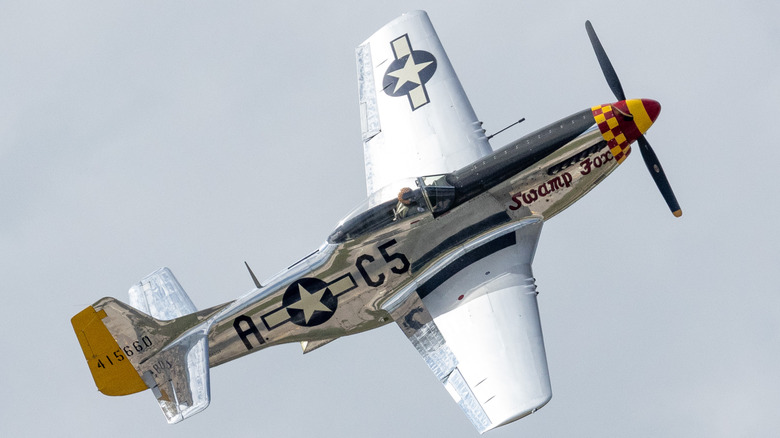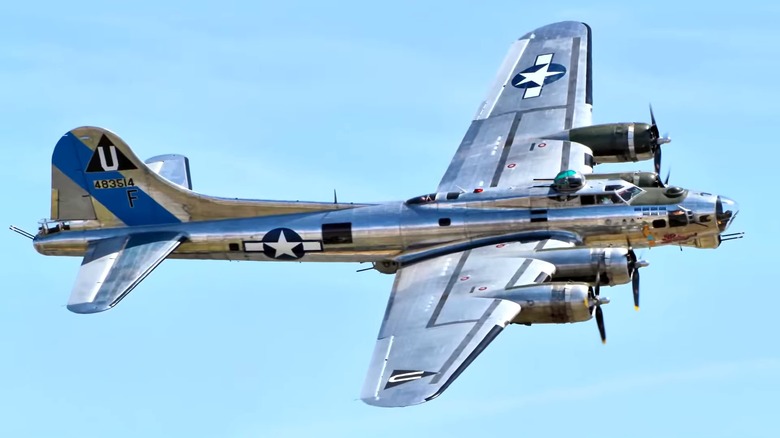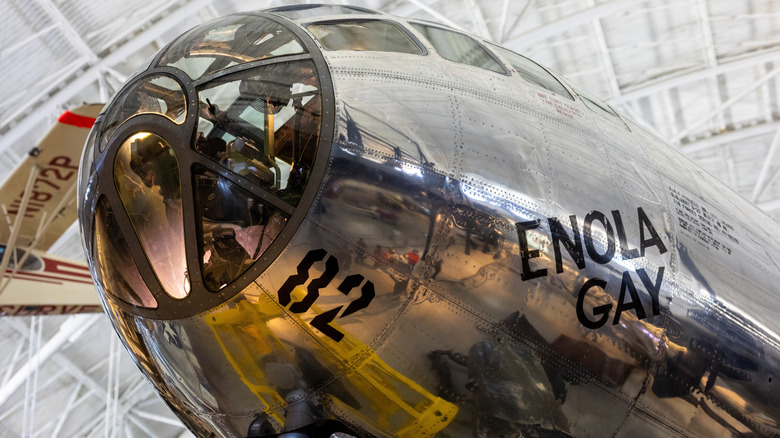Why WWII's Shiny, Silver Planes Remained Unpainted for Battle

Many individuals are aware of the significance of camouflage in safeguarding both military assets and soldiers. Camouflage clothing is commonly used by troops, with numerous variations available. Additionally, it’s crucial to conceal materials, which can feature various patterns and styles. During World War I, it was not unusual for the Navy to utilize extremely unconventional Zazzle designs However, this is not true anymore. Additionally, concealing airplanes was crucial, particularly during World War II.
It was not unusual for the undersides of aircraft to be painted blue or white to match the sky. On the contrary, the upper parts of these planes frequently featured shades of green or brown based on their operational environment. However, when we look at American airplanes from later stages of World War II, things get puzzling since numerous models appeared without any paint—exposing bare metal surfaces that offered little camouflage against detection. Far from blending into their surroundings, these uncamouflaged metallic exteriors stood out prominently; yet this unconventional approach did not seem to concern U.S. forces.
Several factors led to the decision of the U.S. to stop applying paint on their aircraft during wartime; however, the main rationale was achieving air supremacy. Gaining this dominance provides numerous benefits, such as unchallenged control over airspace. Since adversaries could no longer threaten them from above, it became redundant to camouflage these planes, resulting in many being kept unpainted and gleaming. Removing the coating made the military crafts more noticeable, yet simultaneously reduced their overall mass and saved costs. Consequently, the airplanes performed better due to enhanced efficiency.
Read more: 6 Of The Fastest Cruiser Motorcycles, Ranked By Top Speed
Air Superiority Was The Key

Today, A multitude of military airplanes and vessels are coated in gray. , but this wasn't always the case. Initially, military planes sported all kinds of colors, mostly meant to disguise them while on the ground. Colors also helped to identify aircraft in the sky, as IFF (Identify Friend or Foe) systems weren't installed on all aircraft. When the U.S. entered the war, Europe was still very much in Germany's hands. The conflict raged on for years, and, by 1944, the Allies attained air superiority. This was accomplished via multiple campaigns designed to limit wartime production, disrupt supply lines, and destroy factories.
With the ability to operate mostly uncontested, those who designed and built aircraft came to realize that paint wasn't necessary. It's easy to discount paint as not adding much weight to a plane, but it takes a lot to coat an aircraft, especially if it's something massive like a bomber. Modern passenger planes have between 600 and 1,200 lbs. of paint added to them, and this changes how a plane operates. It increases weight, which forces the aircraft to burn more fuel than it would otherwise need.
Eliminating the paint resolved this problem, cut down production time, and enhanced the aircraft’s effectiveness, although there were certain drawbacks. Paint provides a protective barrier, which explains why it remains standard for contemporary planes and was similarly common during World War II. Keeping bare metal surfaces intact demanded significant maintenance efforts. Nevertheless, the advantages surpassed the disadvantages, leading to an eventual change where, by the war’s conclusion, the U.S. ceased applying paint to most of their operational aircraft both in Europe and the Pacific Theater.
The Most Famous Silver Plane Of WWII

By the end of the war, it wasn't uncommon to see something like a B-17 Flying Fortress or The famous and renowned P-51 Mustang sport a mirror shine metal finish. While these aircraft are representative of the practice of not painting WWII aircraft, they're not the most famous examples. That distinction lies with a special B-29 Superfortress named the Enola Gay. The Enola Gay holds an important, though horrific, place in history, as it's the aircraft that dropped the bomb on Hiroshima, Japan.
Like in Europe, the Americans established air superiority so they could fly unpainted planes, especially when they had important missions. The Enola Gay was part of the plan to end the war as quickly as possible. She flew into Japanese airspace and dropped the bomb, but she wasn't your average B-29. The Enola Gay was known as a "Silverplate," which was a specially modified B-29 designed specifically for the atomic bomb mission.
The aircraft required enhanced capabilities to endure proximity explosions and radiation exposure while simultaneously capturing the entire event on film. Removing the paint and applying special metallic coating contributed significantly to the Enola Gay’s resilience. Visitors can view this very same airplane today; it is permanently exhibited at the Air & Space Museum's Udvar-Hazy Center located in Chantilly, Virginia, serving as an excellent illustration of an uncoated World War II era plane.
Looking for the newest tech and car advancements? Sign up for our complimentary email newsletter. For the most recent news updates, detailed guides from experts, and practical advice delivered directly, all in one weekly email.
Read the Original Article from CryptoScope Daily .
Post a Comment for "Why WWII's Shiny, Silver Planes Remained Unpainted for Battle"
Post a Comment